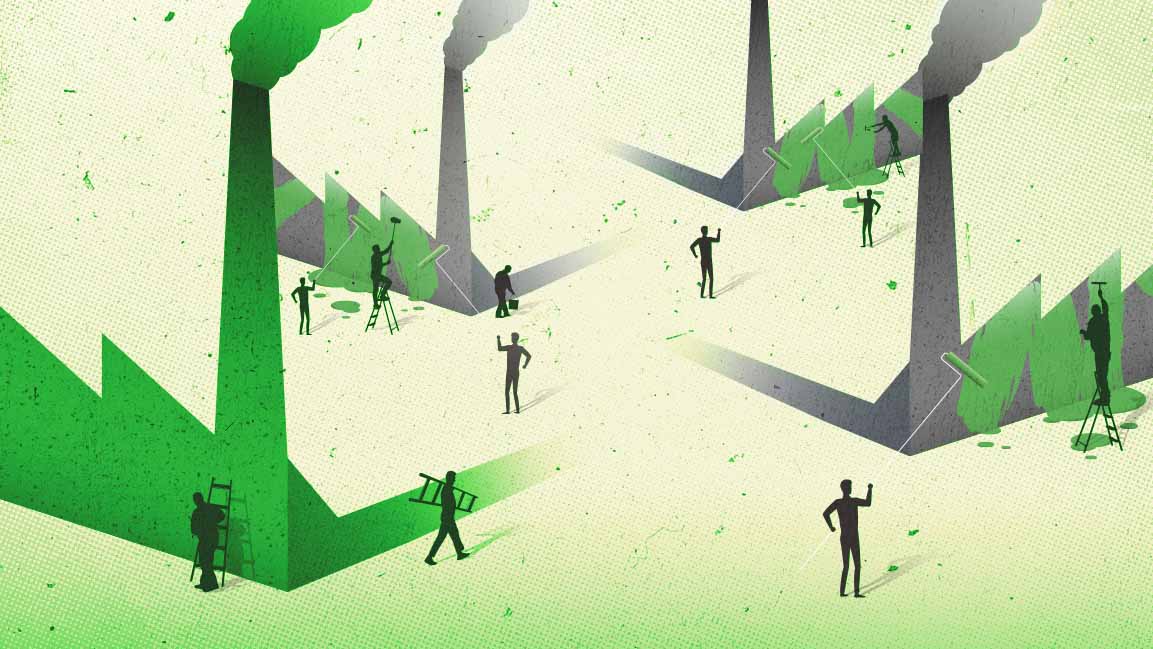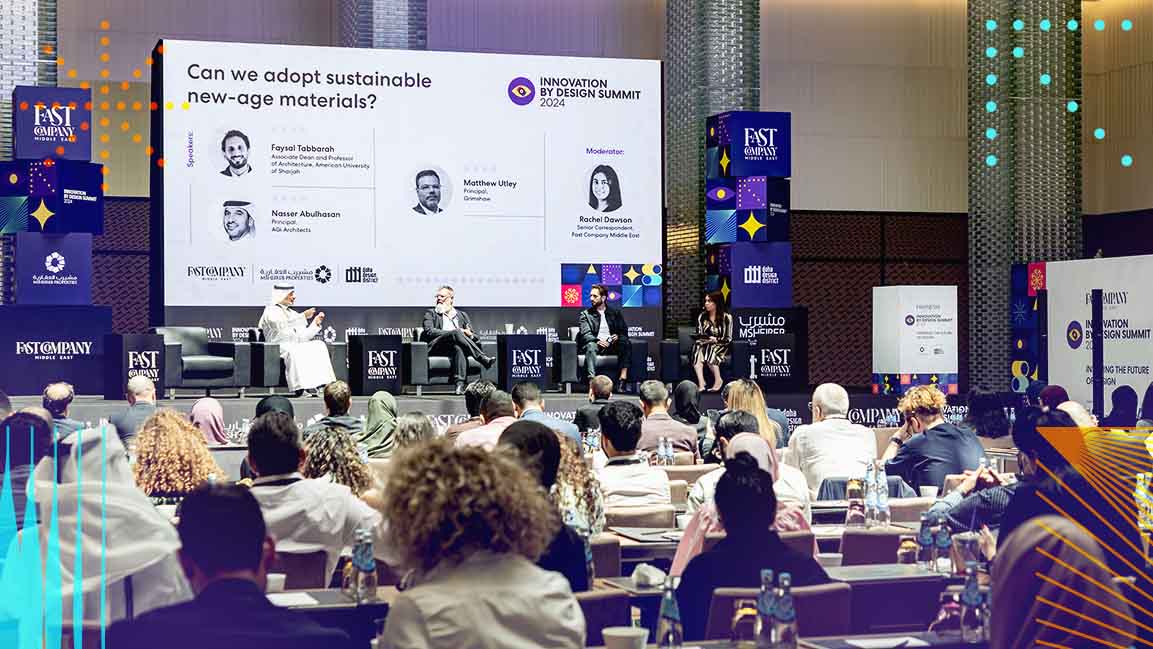- | 9:00 am
Why leadership is critical for climate crisis mitigation
At the Green Goals Summit, experts spoke at length about embracing ESG, major speed bumps on the road to net zero, and involving youth in decision-making

When the threat comes not from enemy people but from nature, we find it much harder to rise to the occasion. Although leaders are not elected or selected for such things, we want them to give us more, leading us onwards and upwards in coping with deep, long-term climate crises.
There is no way for the world to meet its 1.5C warming goal without leadership.
Experts at the Green Goals Summit held in Dubai spoke about the importance of leadership in implementing and delivering the commitments toward environmental, social, and governance (ESG) goals into decision-making and empowering youth into action to make a real difference.
Talking about a big shift in attitude, they said companies are now undertaking solutions to sustainability not just because it is “something nice to do for the planet” but because it is “something they cannot do without.”
ADDRESSING CLIMATE EMERGENCY
As overwhelming and omnipresent as the climate crisis is – from responsible investments to measuring their carbon footprint – companies are trying to solve it.
Throwing light on the three main pillars of sustainability, Hanan Al Yafei, Executive Director, Responsible Investing Unit at Mubadala, says that measurement, stewardship, and integration are key to making businesses sustainable.
“It is first important for leaders to understand the baseline of the carbon footprint of the operations. The second thing is addressing gaps in the market. Leaders need to think about climate-related investment strategies. The last step is integrating these strategies into the investment lifecycle,” adds Al Yafei.
Fazil Abdul Rahiman, Group VP for Sustainability and Climate Change, TAQA, echoed Al Yafei’s thoughts, adding that having a baseline allows companies to understand their impact on the environment and helps be in line with the country’s sustainable goals.
“We not only have the responsibility to measure the emissions, but to develop and implement programs to reduce emissions in line with UAE’s net-zero plan,” he says. “The next step for us in the journey is to estimate Scope 3, to understand what the impact is from a value chain perspective, set targets for it, and eventually make sure it’s verifiable.”
Identifying suppliers and helping them decarbonize their operations by making sustainability a criterion for collaboration also aids in rapidly speeding up sustainability in operations for hundreds of businesses, says Ayman Ismail, Vice President of Government Affairs, Strategy & Sustainability, Schneider Electric.
“We believe that business for good is good for business,” he says. Schneider Electric has identified around 1000 suppliers who make up 90% of its revenues and is helping them decarbonize their procurement policies and their day-to-day operations.
CHALLENGES IN IMPLEMENTATION
While companies are trying their best to reduce emissions from their business operations, there are a few challenges, like geopolitical issues and a lack of awareness, that they still need to overcome. Despite the Paris Agreement and annual conferences of parties (COPs), emissions are rising.
Ismail says, “When we looked at the greenhouse gas emissions in the last two years, 2021 and 2022, we found that they had increased. While we are on a trajectory where we need to decrease emission, the opposite is happening.”
He adds that though there is a commitment of a $100 billion annual fund for developing countries to boost renewables, geopolitical issues are preventing it from being realized. Citing the example of the aviation industry — one of the biggest polluters –, Ismail adds that the availability of adequate alternate green fuels for many industries is a major obstacle.
“Scarcity of alternative resources and the way we are doing business are big challenges. There are bigger problems regarding funding and will to undertake these operations.”
Reluctance to measure their carbon footprints and develop mitigation strategies is a challenge created by companies, which gives rise to problems during the implementation of these strategies and hinders success.
“Trying to improve something that you don’t measure can be quite tricky. It is common sense, but many organizations don’t do it. Carbon accounting is yet to be introduced to the majority of the institutions in the region,” says Adel Alfalasi, Partner and Head of UAE Market, Oliver Wyman.
Al Yafei points out that apart from measurement, it is necessary for leaders to be aware of the alternatives that are available to reduce emissions and to carefully assess where to deploy capital for desired outcomes.
ROLE OF LEADERSHIP IN SUSTAINABILITY
Emphasizing leaders’ pivotal role in setting the agenda for an organization, Rahiman says it is necessary to integrate ESG goals into the decision-making and administration of companies. “Unless it is embedded into the decision-making and the leadership process, it’s very tough to get a buy-in on these things,” he adds.
Corroborating Rahiman’s statement, Alfalasi adds that even when there are people on the ground to deliver these objectives, it is important for leaders to set these targets.
“Around 27 leaders from across the globe whom we interviewed for the World Government Summit report agreed that such an agenda needs to be driven from the top. The importance of leadership is critical to the success of such initiatives,” Alfalasi says.
Experts say leaders play an important part in implementing sustainable development goals by providing access to sovereign wealth funds, infrastructure utility and enabling new technologies. Alfalasi adds that he has seen a significant change in the attitude of the top leaders in many companies who understand that sustainability is vital to their businesses.
Drawing from the experience of Oliver Wyman, Alfalasi says, “We try to take organizations through this journey of being more sustainable. There was not a single time when we brought up the topic of sustainability, and the client hesitated to implement it. It is the role of leadership to cover all angles and make sustainability a priority.”
He affirms that from the leadership perspective, the best plans are the ones that strike the right balance between having an inspirational objective and a pragmatic one that is rooted in reality.
INCLUSION OF YOUTH AND COMMUNITIES
Experts on the panel unanimously agreed that the future of sustainability lies in the hands of the youth. The next generation is more aware of the scale of the problem and has innovative ideas. The only thing needed is empowering them to take action.
Ismail says his company has established a venture capital fund to work with youth-led startups in developing countries. “We work a lot with youth, but we don’t mandate an agenda on them. We have programs to raise awareness and enable them. We believe that they are very competent and very aware. All we need to do is acknowledge their talent and empower them.”
Al Yafei says that in her conversations with the youth, she found that there was a sense of urgency among them, which was driving conversations.
“I have noticed that the more meaningfully you engage with them, the better the outcomes. They are pushing for solutions that we might not have even considered a few years back,” she adds.
Emphasizing the need for a just and equitable transition from a fossil fuel-based economy to a renewable energy one, Rahiman says it is germane to involve communities to ensure no one is left behind.
“When we transition from a fossil fuel-based economy to other new economies, we need to make sure there’s a transition period for the people involved in the fossil fuel activities. It is important to make sure the value chain of the suppliers is also thought about when making this shift,” he says.
Undoubtedly, diverse participation will lead to more robust solutions.








































